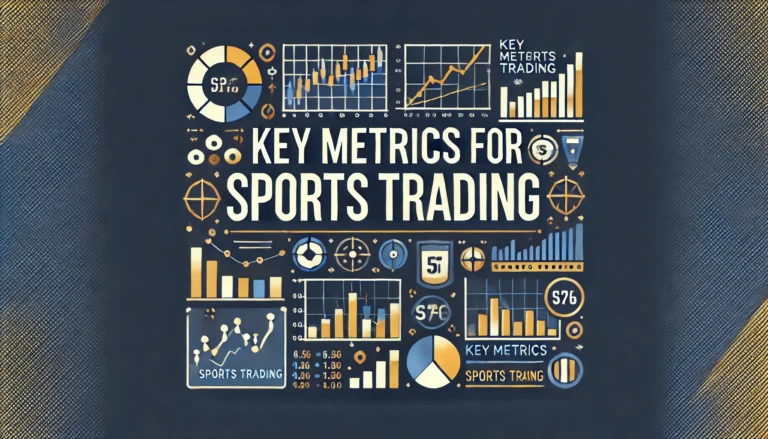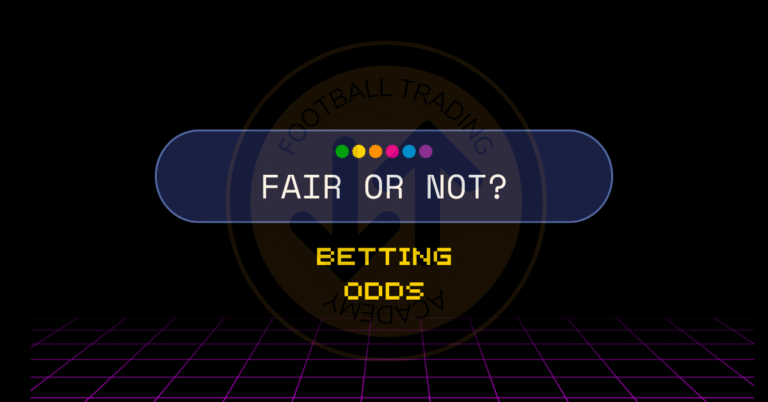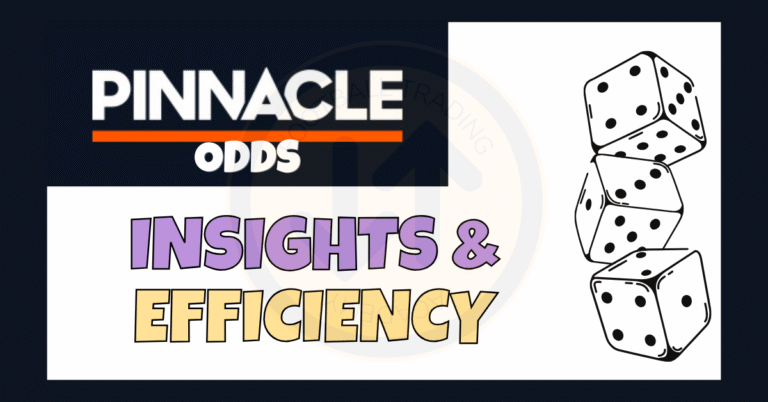When it comes to sports betting and tarding, success isn’t just about luck—it’s about using the right betting metrics to track and optimize your performance. If you don’t measure it, you can’t improve it. In this guide, we’ll break down the essential betting metrics every bettor and sports trader should know.
What Are Betting Metrics?
Betting metrics are key performance indicators (KPIs) used to analyze betting performance, manage risk, and improve decision-making. By tracking these metrics, you can identify profitable patterns, minimize losses, and refine your betting strategy.
1️⃣ Profitability Metrics
Return on Investment (ROI)
ROI measures how much profit you make relative to the total amount of money invested. It’s a key metric for long-term profitability in sports betting and trading. And it’s different than the classic one.
📌 Formula:
ROI (%) = (Profit / Capital) × 100
✅ Example: If you deposited €1,000 in your betting account and made €150 profit over a period of time, your ROI would be 15%.
It is essential to know your staking plan so you don’t overuse or underuse your capital. Why deposit €15,000 if you use a stake of €1? You can put that money in a bank account with interest and keep only €100 for betting.
Yield
Yield is similar to ROI but focuses on total stakes rather than bankroll size. It’s useful for comparing different betting strategies.
📌 Formula:
Yield (%) = (Total Profit / Total Stakes) × 100
✅ Example: If you placed €5,000 in total bets and made a €250 profit, your yield is 5%.
This is somehow equal to the classic ROI from investment, where the bankroll is identical to the investment. In sports betting and trading, a huge advantage is that you can reuse your bankroll over and over again.
Expected Value (EV)
EV estimates the theoretical long-term profitability of a bet based on odds and probability. A positive EV indicates profitable bets over time.
📌 Formula:
EV = (Probability of Win × Profit) – (Probability of Loss × Stake)
✅ Example: If you bet €100 on a 50% chance at odds of 2.10, EV = (0.50 × 110) – (0.50 × 100) = €5 profit per bet on average.
2️⃣ Risk Management Metrics
Liability
Liability is the amount of money at risk in a lay bet on a betting exchange. Understanding liability helps manage bankroll exposure.
📌 Formula for Lay Bets:
Liability = (Stake × (Odds – 1))
✅ Example: A €10 lay bet at 5.0 means a liability of €40 (10 × (5-1)).
Drawdown
Drawdown measures the worst losing streak in your betting history. If your bankroll drops significantly, your strategy might be too aggressive.
✅ Example: If your bankroll was €1,000 and dropped to €600 before recovering, the drawdown is 40%.
Kelly Criterion
A formula used to calculate optimal bet size based on your perceived edge. It helps maximize growth while minimizing risk.
📌 Formula:
Kelly % = (Edge / Odds – 1) × 100
✅ Example: If your edge is 5% on odds of 2.00, Kelly suggests a 5% stake of your bankroll.

3️⃣ Betting & Trading Performance Metrics
Strike Rate (Win Rate)
Strike rate is the percentage of bets won compared to total bets placed. It’s important for balancing risk and reward.
📌 Formula:
Strike Rate (%) = (Winning Bets / Total Bets) × 100
✅ Example: If you win 30 bets out of 100, your strike rate is 30%.
Closing Line Value (CLV)
CLV compares the odds you bet at with the market’s closing odds. Beating the closing line consistently is a strong indicator of a profitable strategy.
📌 Formula:
CLV (%) = ((Placed Odds – Closing Odds) / Placed Odds) × 100
✅ Example: If you bet at 1.80 and the closing odds were 1.95, your CLV is negative, meaning you lost value.
Profit/Loss Distribution
This metric shows how profits and losses are spread over multiple bets, helping evaluate volatility and consistency in betting results.
✅ Example: If most profits come from a few big wins, you might rely on luck rather than skill.
Sample Size & Statistical Relevance
A large enough sample size is crucial for evaluating betting strategies accurately. Short-term variance can distort results, so betting models should be tested over thousands of bets before drawing conclusions.
Market Efficiency Score
This metric evaluates how close your bets are to true market prices. The more efficient your bets, the lower your long-term losses.
✅ Example: If you consistently bet at odds above true probability, you may have an edge over the market.
4️⃣ Volume & Pricing Metrics (V/P)
V/P (Volume & Pricing) Metrics help traders analyze market liquidity and odds efficiency.
Liquidity
Liquidity represents the total amount of money available in a betting market on an exchange. Higher liquidity means tighter spreads and better odds.
✅ Example: Premier League matches have high liquidity, while lower-league games may have poor liquidity and large odds gaps.
Tick Size
A tick represents the smallest possible price movement on a betting exchange. Smaller tick sizes make it easier to lock in profits when trading.
✅ Example: On Betfair Exchange, odds between 2.00 and 3.00 move in 0.02 increments (ticks).
Implied Probability
Implied probability is the bookmaker’s estimated probability of an event occurring, calculated from odds.
📌 Formula:
Implied Probability (%) = (1 / Decimal Odds) × 100
✅ Example: Odds of 1.50 imply a 66.67% chance of winning.
Master Betting Metrics for Long-Term Success
Tracking and understanding betting metrics is essential for long-term success. Whether you focus on ROI, strike rate, CLV, liquidity, or drawdown, knowing your numbers helps refine your betting strategy and maximize profits.
Want to improve your betting performance? Start tracking your betting metrics today!





